Growing vertically is a great way to make the most of a small garden space. Learn to build an inexpensive garden trellis from materials you might already have on hand with these easy DIY trellis ideas.
Be sure to check out these vegetable gardening tips to make your efforts in the garden less expensive!
Guest post submitted by Cris Daining in 2015; this post has been updated.
Sometimes, gardening can become unexpectedly expensive. By the time you purchase your garden tools, good-quality seeds, good compost and garden soil, raised bed materials, garden tiller, etc., you may be cringing a bit at the costs.
I’ve been struggling a bit with staying in the garden budget for the year, and I’m always looking for ways to re-use materials or get things done as inexpensively as possible.
One way to keep within the garden budget, stay frugal, and become more self-reliant is to use materials that you have available around your home in order to make your garden trellises. These DIY trellis ideas are a great way to make the most of a small garden space by growing vertically.
Grow Some Greens!
Ready to grow fresh greens, no matter WHERE you live? Sign up for my
FREE quick-start guide and start growing some of your own food!
New to gardening? Limited on space? The 5-Gallon Garden gives you the skills you need to grow food in the space you have. Get started with your garden today!
What is a Garden Trellis?
Used to support climbing plants in the garden, trellises can be made from a variety of materials. Some are lightweight, others are made from sturdier materials. Wood and metal trellises are often used for flowering plants like roses and clematis vines, but they can also play a part in a vegetable garden as a more permanent addition.
The type of vegetable garden trellis you’ll need depends on what you’re growing and how rampant it is.
DIY Trellis Materials to Consider
The first thing you should do before starting to build a trellis is to look around your home and yard for potential trellis materials. There are many options:
- Tree branches or bamboo
- Leftover lumber, fences, wooden ladders, pallets, etc.
- Bits and bobs of twine, string, netting, zip ties, etc.
- Leftover rebar, stakes, etc.
Use excess materials that you have lying around to make your garden trellises for free. Since I live on two mostly wooded acres, there are plenty of tree branches to use. (I use branches that are alreadon the ground.)
For this trellis, I used some wooden stakes for additional support. Small branches with a natural ‘v’ in them became garden stakes.
Two garden trellis nets (each one 5×15, and cut in half) were my big expenditure, costing a grand total of $15.00 for four garden trellises (each one measuring 7′-8′ long). I used some leftover twine to help tie the trellis net to the branches.
Making a String Trellis for Peas
I also made one garden trellis entirely out of twine, for growing peas. I had leftover twine from other projects, so this garden trellis was essentially free.
Most of the people who visited my garden really liked the twine-only trellis design. I have walked through my garden with many friends and family members lately, and they have all commented on how “beautifully natural” my garden trellises look. I love them too, and I’m always thinking about new DIY trellis ideas.
This trellis could also work for growing vining green beans.
Remember, the plants don’t care WHAT the trellis looks like, so long as it helps them grow tall and healthy. However, I do care a bit about the aesthetic appeal of gardens, and I am sure you do too.
Fencing as Trellis
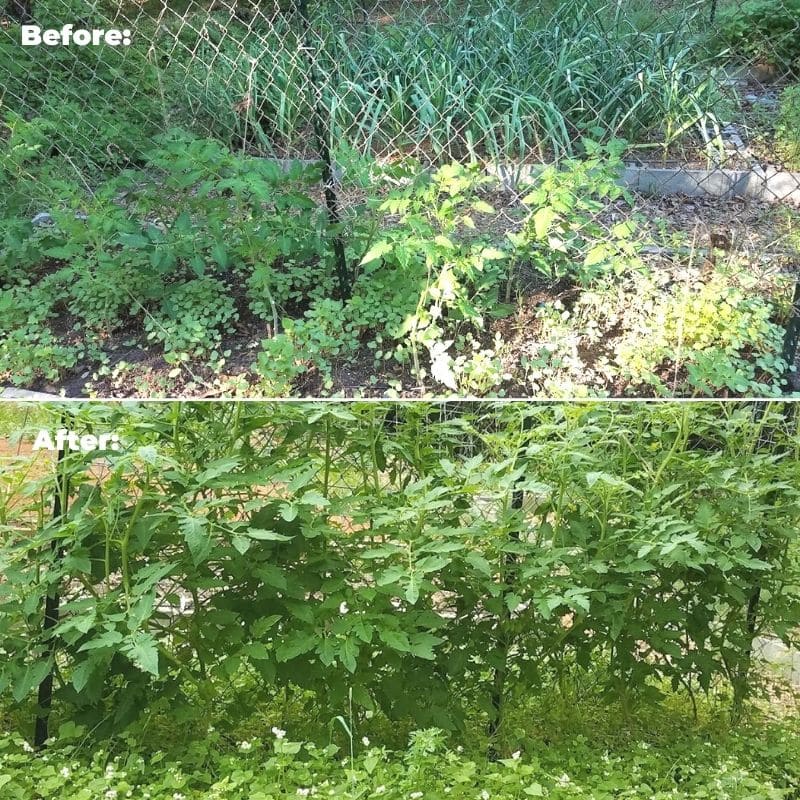
Scavenged chain link is sturdy and perfect for supporting tomatoes.
 Cattle Panel Trellis
Cattle Panel Trellis
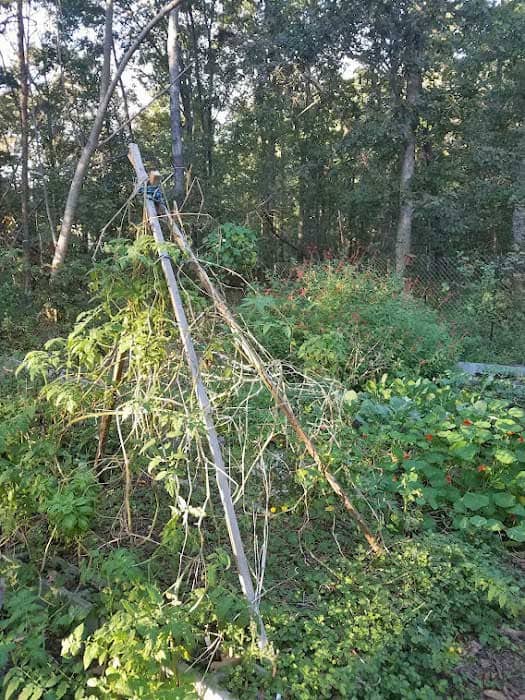
Not Straight and Narrow
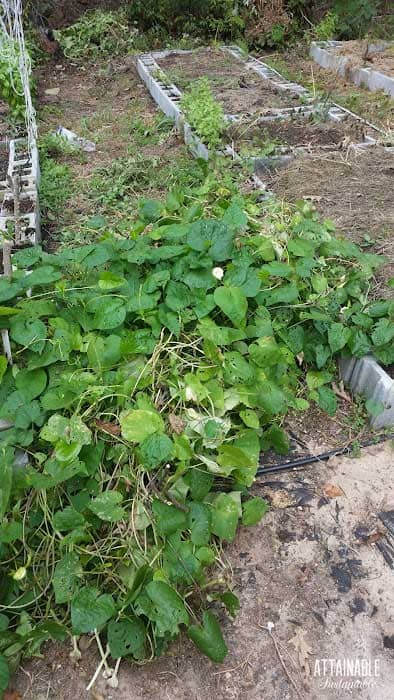
Use green branches to prevent old branches from collapsing.
Make it Sturdy Enough!
More DIY Trellis Ideas for Inspiration
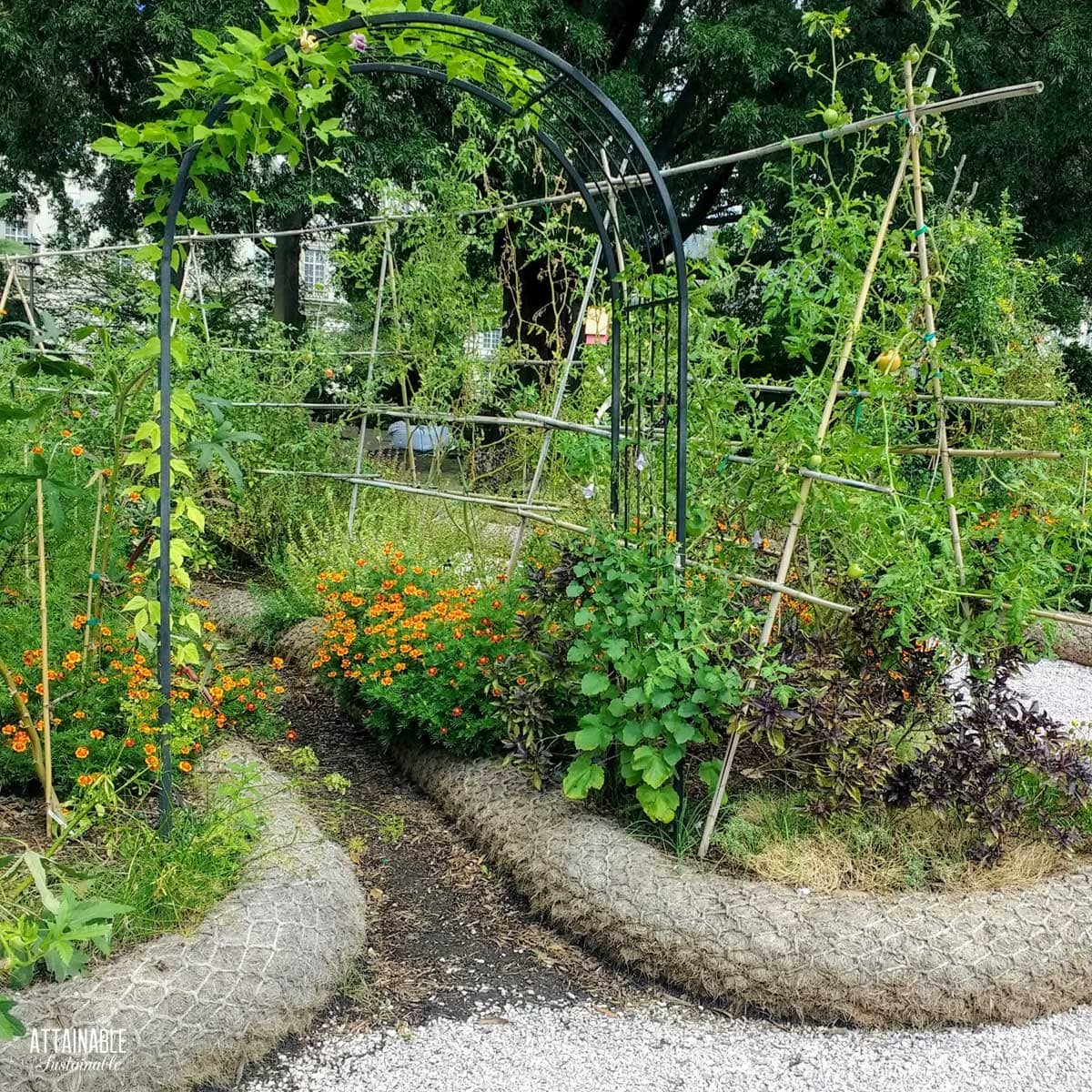
Metal arch and trellises in a garden at the Smithsonian. Photo: Kris Bordessa
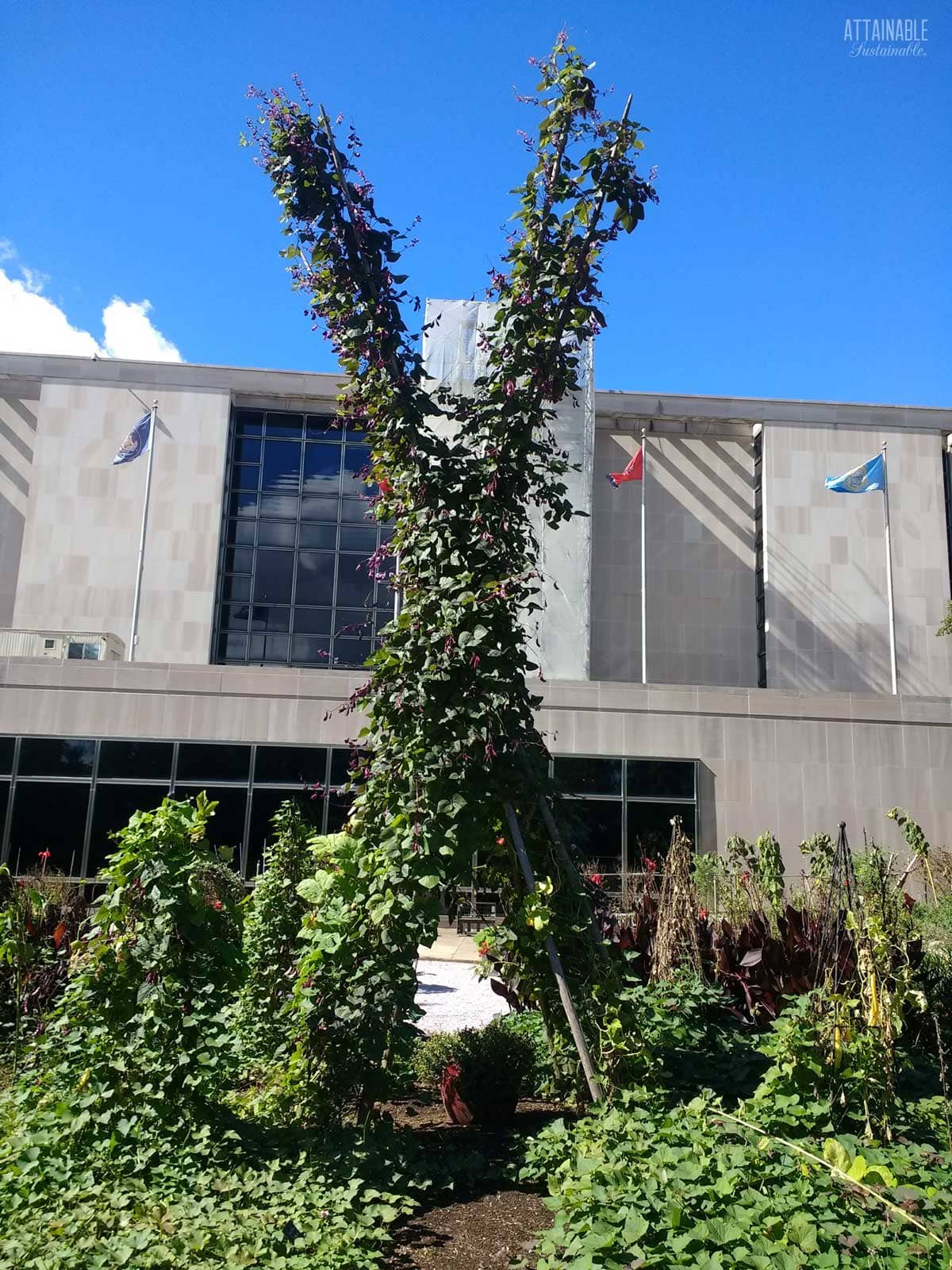
Simple trellis structure at the Smithsonian. Photo: Kris Bordessa
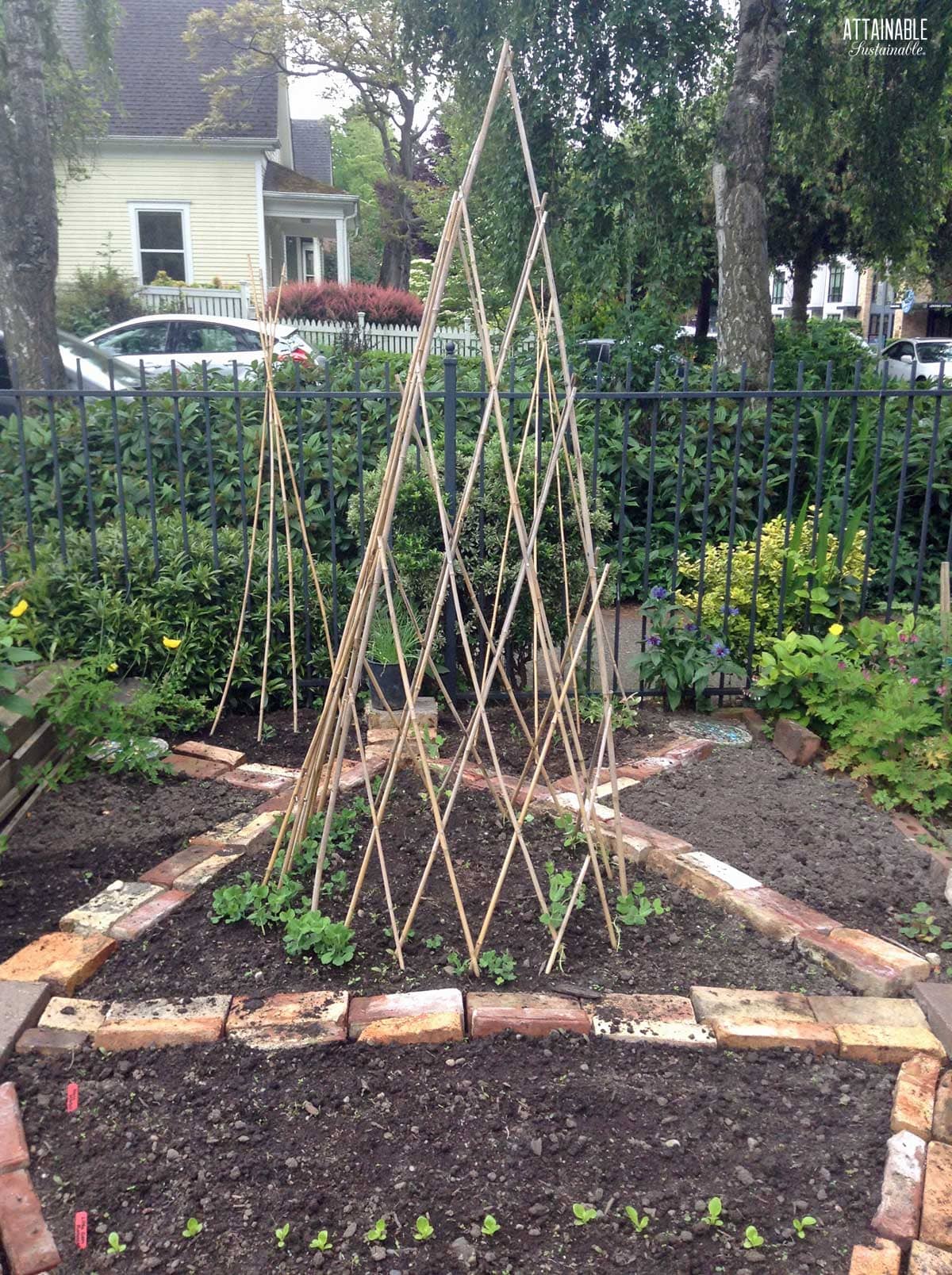
Trellis in a community garden in Seattle. Photo: Kris Bordessa
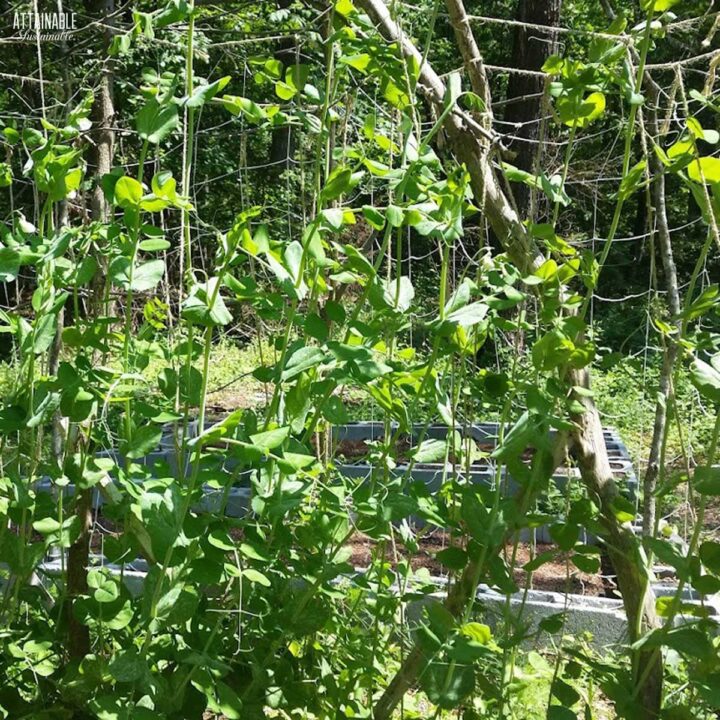
Build a String Trellis
This easy string trellis works well for vining peas. Growing them upright saves space in the garden.
Materials
- Tree branches (1″-2″ thick, over 5′ tall, preferably with some branches coming off for horizontal support)
- Twine and/or garden trellis net and/or zip ties
- Rebar OR leftover wooden stakes
- Garden stakes OR small branches with a ‘v’ in them
Tools
- Mallet for pounding stakes
Instructions
- Search your local forest or wild areas for suitable tree branches. Trim off the excess little branches.
- Stake the tree branches into the ground in the appropriate place in your garden. Since I have raised beds, they fit snugly in between the cinder blocks with just some leftover wooden stakes as additional support. However, you might need to use rebar, depending on what your garden looks like. Secure the tree branches to the rebar/stakes with leftover string or twine. Connect the branches together with the horizontal offshoots. Tie the horizontal offshoots to the branches with twine or leftover zip ties.
- Cover the tree branches with the garden trellis net. Use the horizontal branches to secure the trellis netting. Make it as tight as you can. Stake it into the ground with either garden stakes or small ‘v’-shaped branches.
- Plant your seeds and enjoy!
About the author: Cris is a happily obsessed gardener with year-round gardening in her mild South Carolina climate. She writes at The Homestead Garden about gardening tips, her philosophical musings about finding joy in nature, herbal remedies, and she also shares her favorite food recipes that use bold flavors and fresh garden produce (as well as sharing her newest passion for creating tasty hot sauce recipes).
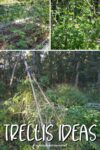
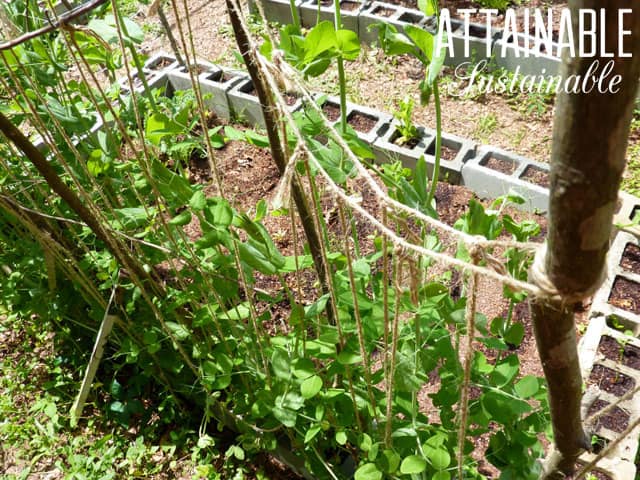
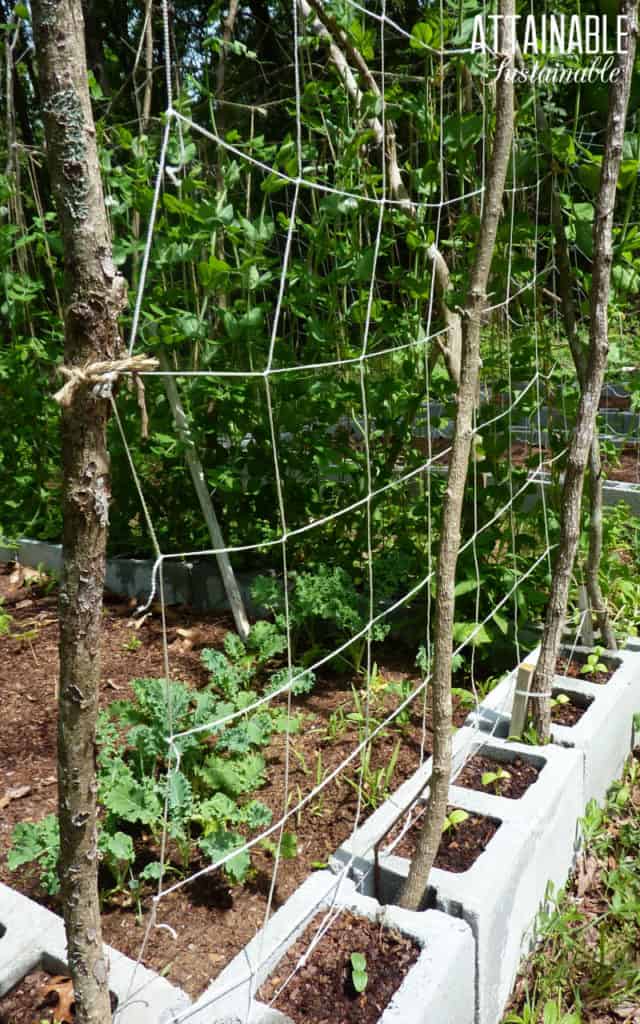

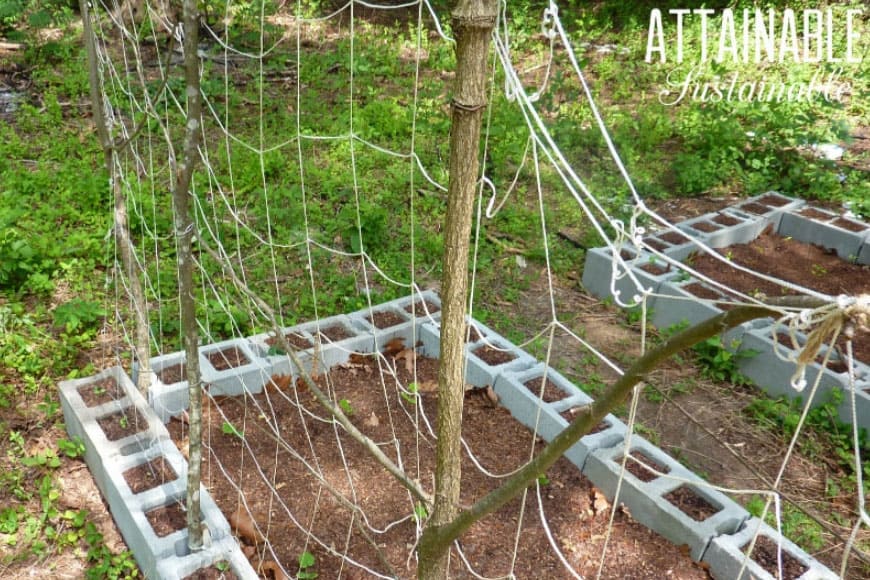
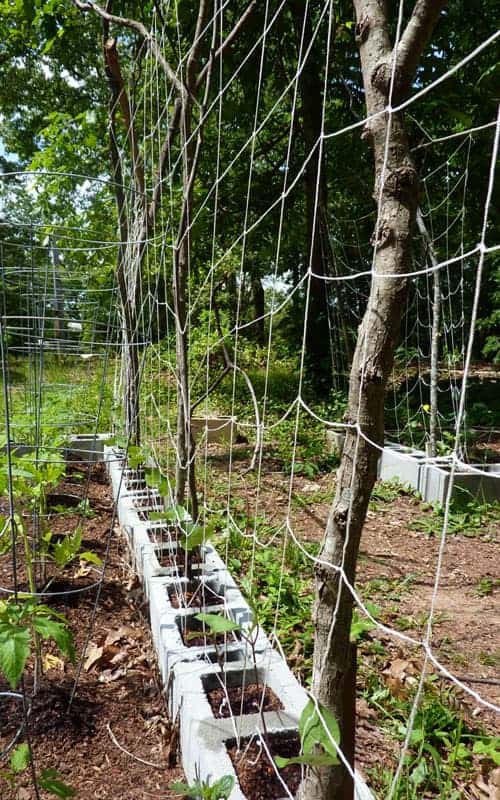
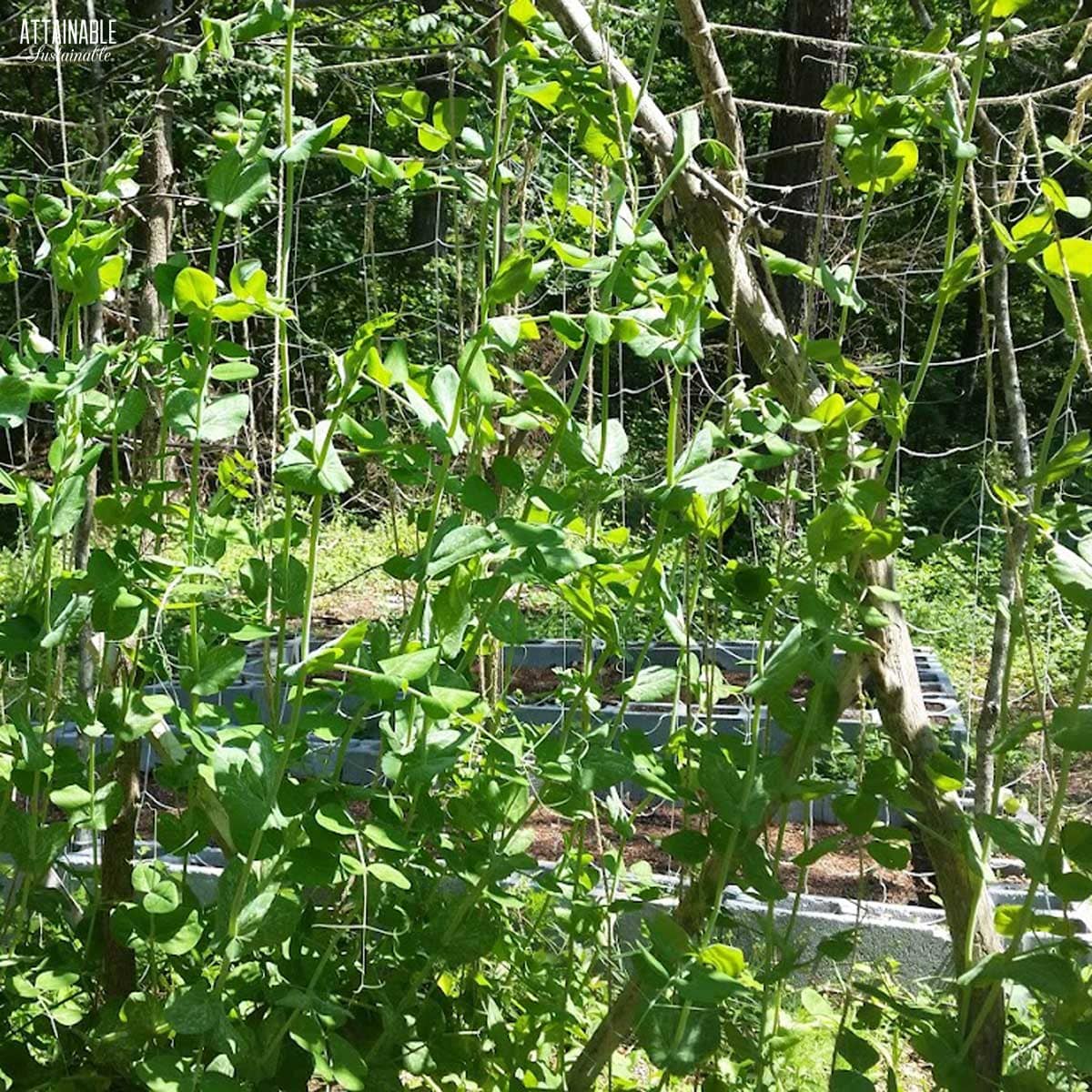
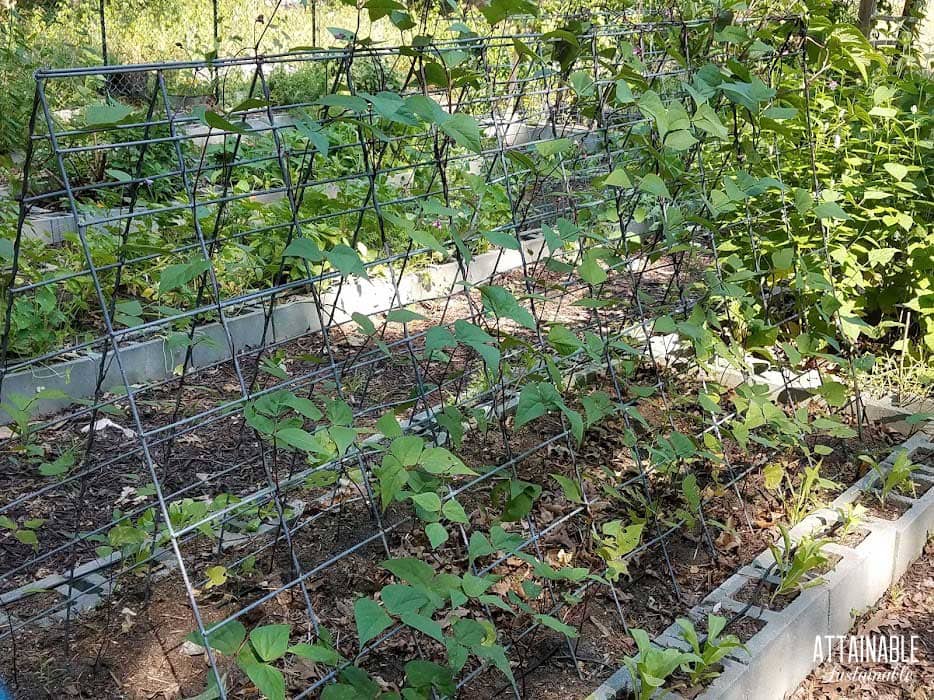 Cattle Panel Trellis
Cattle Panel Trellis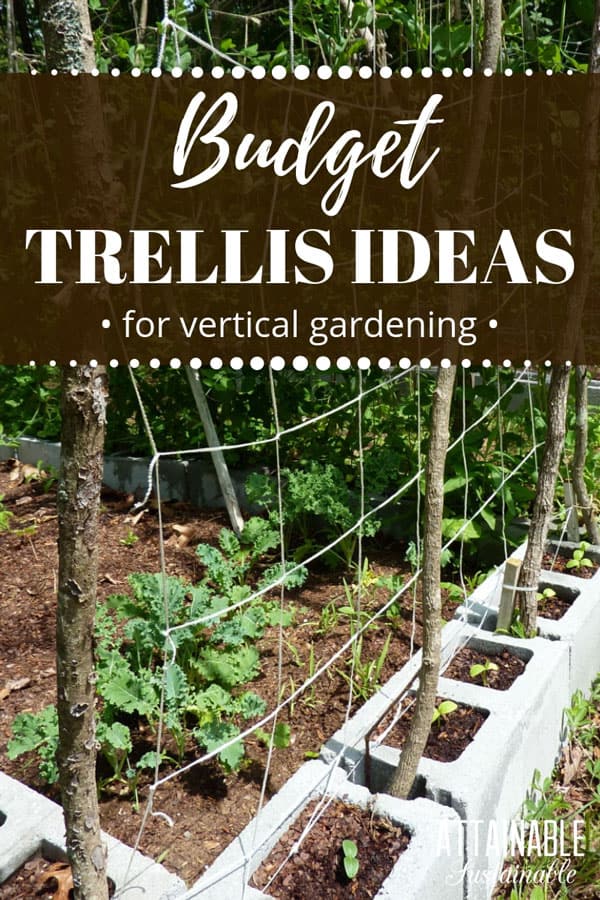





Any idea what kind of berm/garden border is shown in the first photo from the Smithsonian? It looks simple and effective. Thanks
Try searching for straw wattle!
Doing a homemade trellis for my cucumbers for the first time. Do you have to lead the plants up constantly or is it one time enough and the plants continue growing into the trellis?
Using a tie may help. You’ll want to keep your eye on it, but you shouldn’t have to constantly “train” or tie it. Good luck!
Hello, my name is Howard and I’ve recently moved into a home in Charlotte, NC. We moved here from Des Moines, IA where I maintained a modest garden. Of course our soil was amazing. Getting ready to start a garden here and would like to do it resourcefully and ideally, on the cheap. Like the look and ideas you have and was wondering about what you did as far as soil? I’ve got the same red clay base. Interested in any tips and recs. you have.
Thanks,
HB
Check out this post: https://www.attainable-sustainable.net/mulch/
And then, since you’re new to Charlotte, visit my friend Jody’s site: https://www.charlotteonthecheap.com/
The crepe myrtles leave lots of long, strait branches to prune in spring. Ready made for trellis or wattle bed edging . Waste not, want not.
I just use whatever I can scrounge up,from old bed frames to street signs or lumber. Reuse and recycle.
I have a friend who just used fence stakes and twine, and it worked really well for her.
I do like your granite blocks around your bed. I’m definitely going to do that this year. What do you have planted in the blocks? I was planning on doing herbs or maybe strawberry plants, but that’s a great place to plant peas or beans.
Where do you find the trellis netting? I’ve not seen it at the big box stores and I haven’t located it on Amazon either. Maybe just using wrong search words?
This is the netting that I bought. It worked perfectly! https://amzn.to/1N7sphT
I love this, if I could afford cattle panels, maybe that would be a different story, but getting them home would be an even larger problem since we only have a Toyota Corolla… Thank you for sharing… I will give it a try next year…
WOW! That’s a lot of work.
I use cattle panels – $19.95 at our farm store.
Easy & work great.